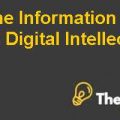
Companies and organizations need to formulate the most appropriate strategies and policies that could ensure their sustainability in a complex economic and social environment. To be successful in the step they need to have access to a huge amount of data with the right sense to evaluate that big data.
While tackling a problem the decision makers often rely on the statistical findings and data based decision models. Data based decision making mainly based on data collection, technological infrastructures and statistical methods. How these analytical results are communicated to decision makers is a vital issue in decision making.
As the executive decision makers are often, less familiar about the formal statistical reasoning, thus, it lies in the hands of the expert analysts to make the finding’s description easy to them so that the an efficient alternative could be selected to implement. Evaluation of the statistical information has direct relation with the decision making, it could lead to a completely different decision if the analysts describe the findings in a different way, as many of the behavioral experiments have shown.
Description of the statistical information typically involves a verbal statement, or a written report which often comprise of one or more table that incorporate the overall summary of the information collected statistically. It is a default mode of presenting the finding, as the author describes. In his own research conducted from 257 economic scholars in which their opinions and predictions were collected on a simple regression analysis. But the observations of the research were surprising that most of the respondents had a hard time in accurately deciphering the result, although, they had conducted frequently such kind of analysis.
The authors concluded that less experts of statistics often also utilized the simulated experience based on their self-judgment to provide interpretation of statistical findings because the results of the descriptions by the respondents led to an illusion of predictability.













